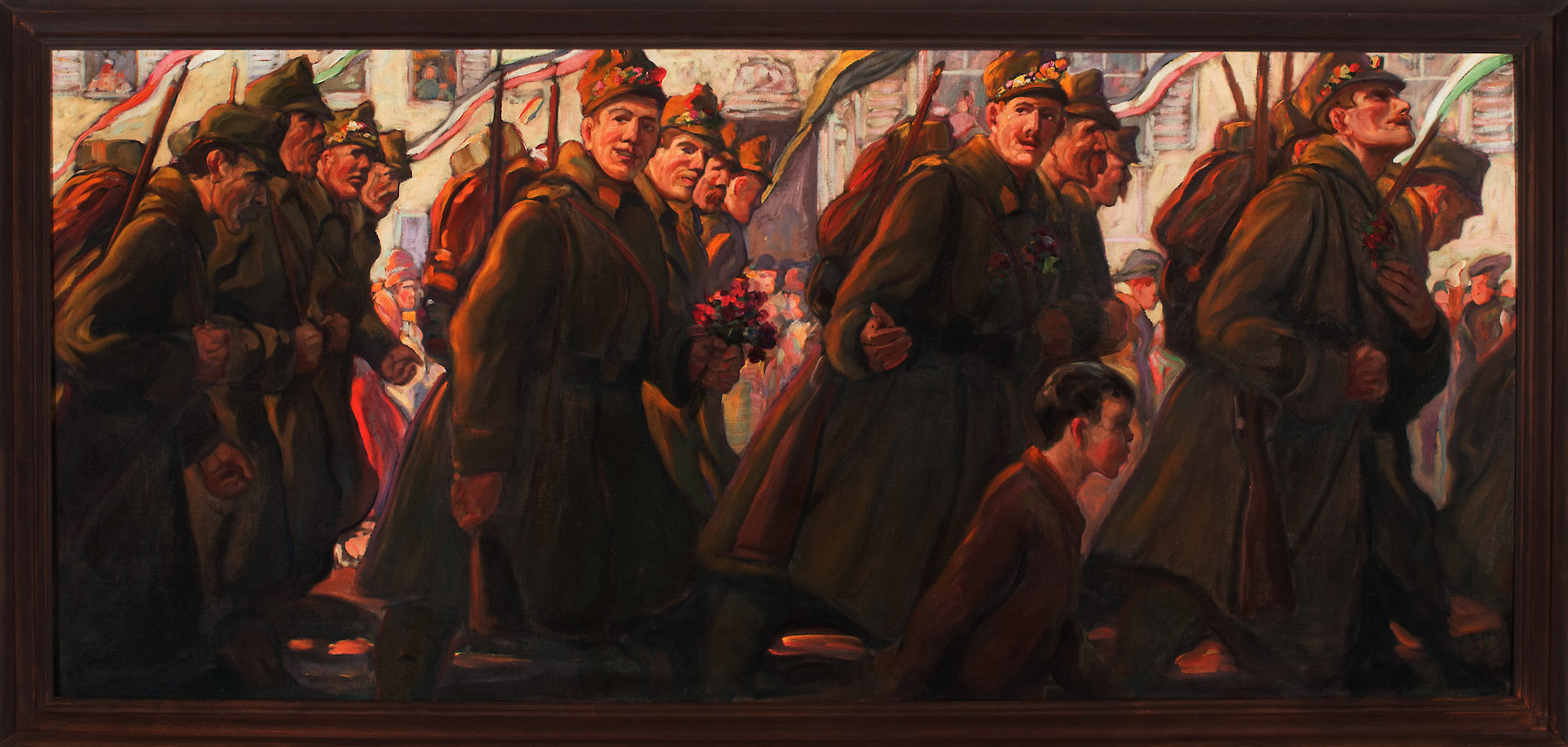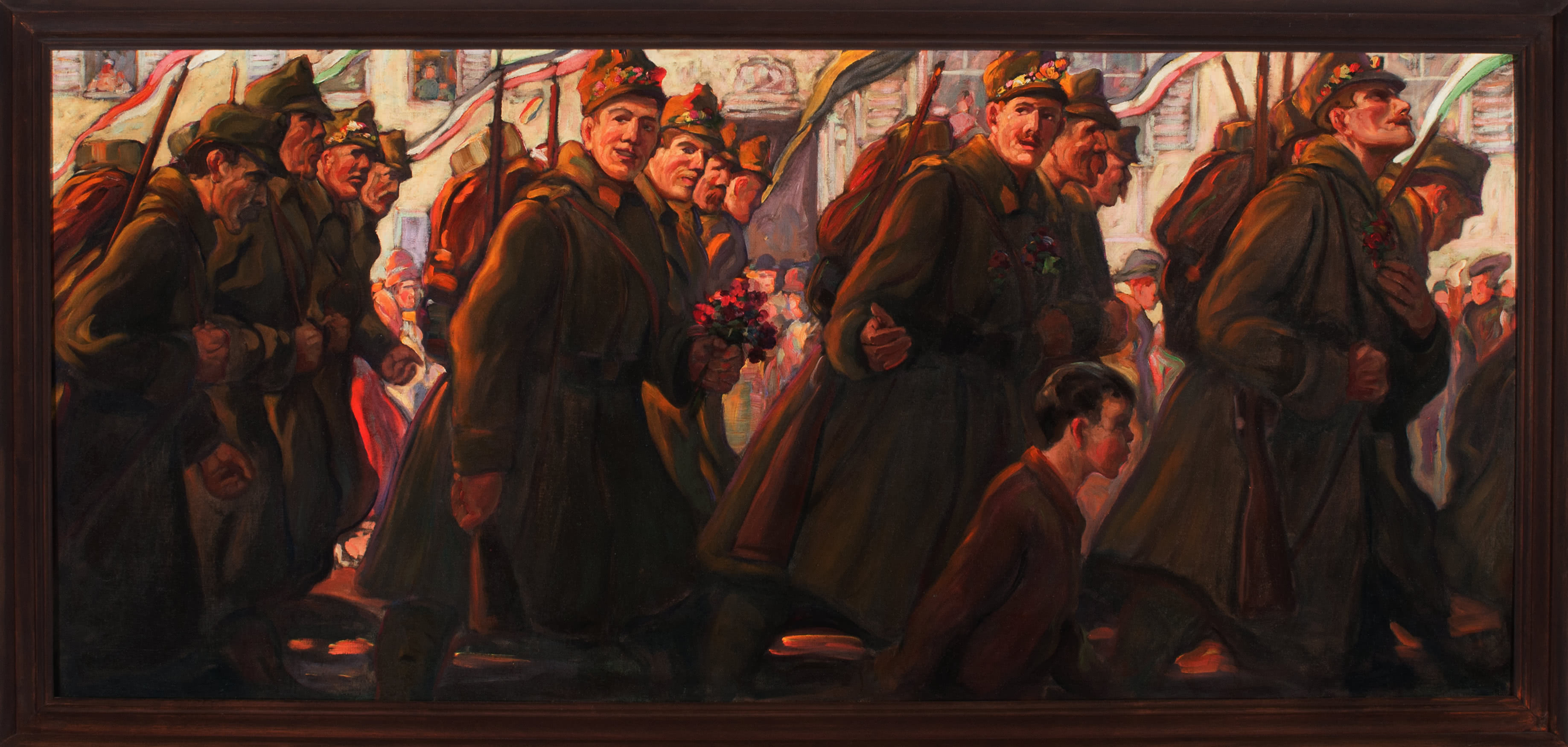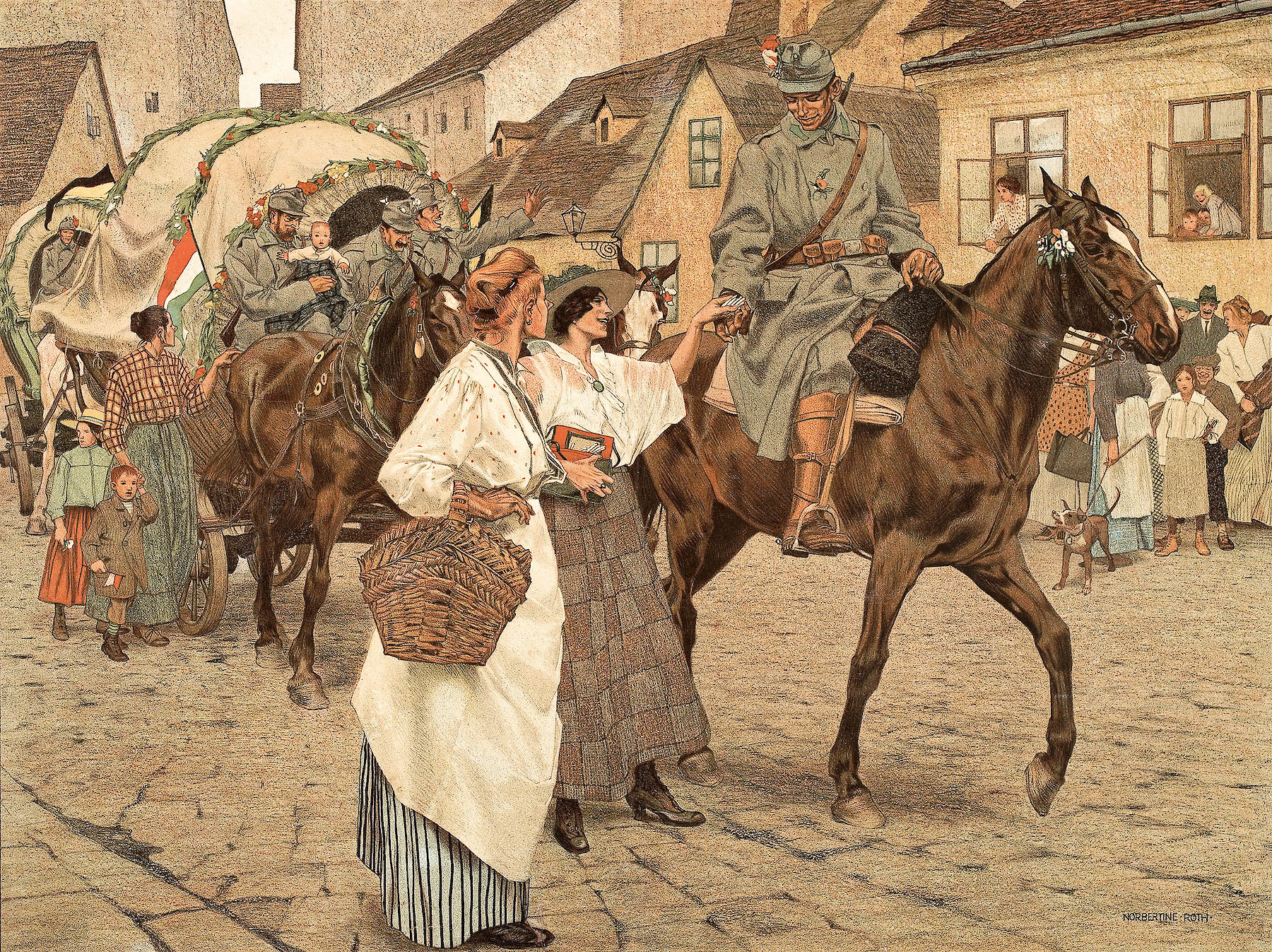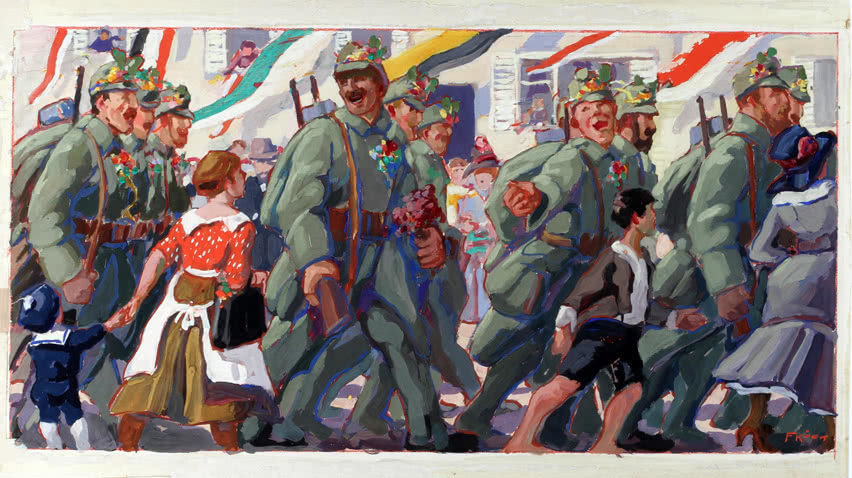
The soldiers carry tornister packs on their backs, and a bayonet, a bullet pouch, and a haversack on their belts. One man had to carry up to 60 kilogrammes of luggage.
The soldiers are in their combat uniforms with coats and caps. Not before 1916, steel helmets were introduced in the Austro-Hungarian army.
As a farewell, the soldiers were decorated with flowers. They stand for the “Spirit of 1914”, the war euphoria, which was both propagandistic and short-lived from the vantage point of the present. Already in late 1914, more than one million Austrian-Hungarian soldiers were either dead, wounded, missing, or prisoners of war.
Auszug von Soldaten des Grazer Hausregiments (Nr. 27) (Departure of Soldiers of the Local Regiment from Graz (No. 27)) Franz Köck, around 1918
Into the First World War with Enthusiasm?
Delirious crowds attending the departure of the soldiers in the summer of 1914 have dominated our idea of the beginning of World War I down to the present day. Franz Köck conveys this cliché only to a limited extent in his painting. He depicts proud joy, but also the pathos of farewell, in a more subtle manner. While the young soldiers enter eye contact with the viewers with inviting confidence, the averted gloomy eyes of the older men evoke compassion.
Oil on canvas
frame: 81 × 171 cm
Graz Museum / Photo: Edin Prnjavorac
War Propaganda
The farewell of departing soldiers as a positively depicted event was very common as a subject during the First World War and was also found on numerous propaganda postcards. Such representations of jubilant patriotism served to justify the declaration of war. Franz Köck reinforces this by emphasizing the flags in the streets. The group of soldiers marching in step conveys the impression of power.
The subject of the soldiers’ departure was also suitable for consolidating gender stereotypes: The caring wife and mother who stays at home is contrasted to the brave, strong soldier who leaves to defend this home.
History of the Object
Franz Köck created an entire series of scenes from the soldier’s life during the First World War—these paintings found positive mention in the press of the time as particularly atmospheric works. The paintings were used to decorate the Kriegswaisenkino (War Orphan Cinema), which was opened in March 1918 as a precursor to the Ringkino (Ring Road Cinema) at Joanneumring. The net proceeds were used to support war orphans. Free meals for children were also served at this place.
Preliminary sketches of Franz Köck’s series can be found in the collection of the Neue Galerie Graz at the Universalmuseum Joanneum. Here, eight months before the end of the war, Köck chose an even greater, more light-hearted jubilation mood for the subject of the “Departure of Soldiers” than in the finished painting, and also emphasized the role of the children as figures in the painting even more strongly.
The Artist: Franz Köck
Franz Köck (born in Graz in 1886, died in Graz in 1975) had completed his military service as a one-year volunteer before his artistic education at the State Art School. In World War I, he became First Lieutenant of the Reserve. After the war, Köck worked as a freelance artist in Graz and created the series for the Kriegswaisenkino, one of his first major commissioned works. In addition to war propaganda works during the First World War, Köck created landscape paintings and religious representations in a traditional style committed to mood impressionism. During the National Socialist era he worked on programmatic subjects glorifying the regime. After the end of the Second World War, he turned increasingly to religious subjects.


